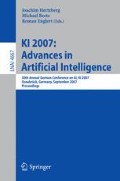Abstract
The Early Detection, Alert and Response (eDare) system is aimed at purifying Web traffic propagating via the premises of Network Service Providers (NSP) from malicious code. To achieve this goal, the system employs powerful network traffic scanners capable of cleaning traffic from known malicious code. The remaining traffic is monitored and Machine Learning (ML) algorithms are invoked in an attempt to pinpoint unknown malicious code exhibiting suspicious morphological patterns. Decision trees, Neural Networks and Bayesian Networks are used for static code analysis in order to determine whether a suspicious executable file actually inhabits malicious code. These algorithms are being evaluated and preliminary results are encouraging.
Access this chapter
Tax calculation will be finalised at checkout
Purchases are for personal use only
Preview
Unable to display preview. Download preview PDF.
References
NCSA Study, http://www.staysafeonline.info/pdf/safety_study_2005.pdf
Symantec Internet Security Threat Report (January-June 2004), www.symantec.com
The Danger of Spyware, Symantec Security Response (June 2003), http://www.symantec.com
Symantec 2006 Security Report, http://www.symantec.com/specprog/threatreport/entwhitepaper_symantec_internet_security_threat_report_x_09_2006.en-uspdf
Tahan, G., Glezer, C., Elovici, Y.: eDare- Early Detection Alert and Response to Electronic Threats, Working Paper, Deutsche Telekom Labs at Ben Gurion University
Schultz, M., Eskin, E., Zadok, E., Stolfo, S.: Data Mining Methods for Detection of New Malicious Executables. In: Proc. of the IEEE Symposium on Security and Privacy, pp. 178–184 (2001)
Abou-Assaleh, T., Cercone, N., Keselj, V., Sweidan, R.: N-gram based Detection of New Malicious Code. In: COMPSAC 2004. Proc. of the 28th Annual International Computer Software and Applications Conference (2004)
Kolter, J.Z., Maloof, M.A.: Learning to detect malicious executables in the wild. In: Proceedings of the Tenth ACM SIGKDD International Conference on Knowledge Discovery and Data Mining, pp. 470–478. ACM Press, New York, NY (2004)
Quinlan, J.R.: C4.5: Programs for machine learning. Morgan Kaufmann Publishers Inc., San Francisco (1993)
Weka software, http://www.cs.waikato.ac.nz/ml/weka/
Pearl, J.: Fusion, propagation, and structuring in belief networks. Artificial Intelligence 29(3), 241–288 (1986)
Bishop, C.: Neural Networks for Pattern Recognition. Clarendon Press, Oxford (1995)
Demuth, H., Beale, M.: Neural Network toolbox for use with Matlab. The Mathworks Inc., Natick, MA (1998)
Golub, T., Slonim, D., Tamaya, P., Huard, C., Gaasenbeek, M., Mesirov, J., Coller, H., Loh, M., Downing, J., Caligiuri, M., Bloomfield, C., Lander, E.: Molecular classification of cancer: Class discovery and class prediction by gene expression monitoring. Science 286, 531–537 (1999)
Bauer, E., Kohavi, R.: An empirical comparison of voting classification Algorithms. Bagging, Boosting, and Variants. Machine Learning 35, 1–38 (1999)
Author information
Authors and Affiliations
Editor information
Rights and permissions
Copyright information
© 2007 Springer-Verlag Berlin Heidelberg
About this paper
Cite this paper
Elovici, Y., Shabtai, A., Moskovitch, R., Tahan, G., Glezer, C. (2007). Applying Machine Learning Techniques for Detection of Malicious Code in Network Traffic. In: Hertzberg, J., Beetz, M., Englert, R. (eds) KI 2007: Advances in Artificial Intelligence. KI 2007. Lecture Notes in Computer Science(), vol 4667. Springer, Berlin, Heidelberg. https://doi.org/10.1007/978-3-540-74565-5_5
Download citation
DOI: https://doi.org/10.1007/978-3-540-74565-5_5
Publisher Name: Springer, Berlin, Heidelberg
Print ISBN: 978-3-540-74564-8
Online ISBN: 978-3-540-74565-5
eBook Packages: Computer ScienceComputer Science (R0)

